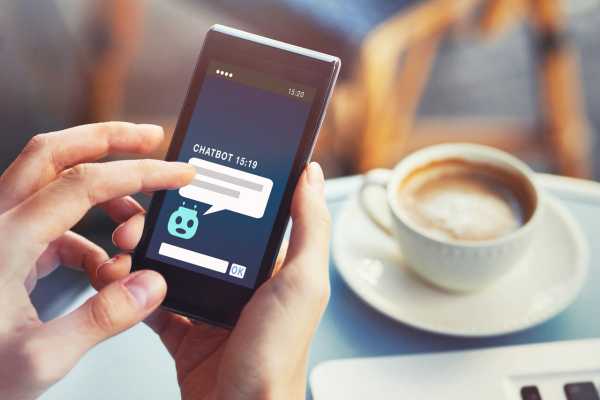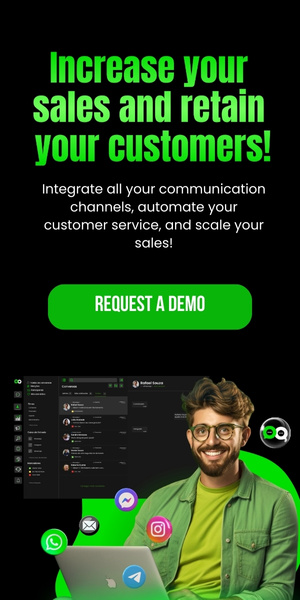In recent years, WhatsApp has become one of the most popular and effective tools for businesses to communicate with their customers.
For delivery businesses, this platform has been a true revolution, facilitating the ordering process and increasing customer interaction.
With the use of chatbots, this communication becomes even more efficient, enabling automation and 24/7 service.
This article explores the benefits of using chatbots on WhatsApp for delivery services, showing how this technology can transform customer service and boost sales.
Additionally, we will explain how to set up a WhatsApp chatbot for delivery and how Nexloo’s solution stands out in the market as the best choice for those seeking fast and efficient results.
What is a WhatsApp Chatbot for Delivery?
The first question many people ask is what exactly a WhatsApp chatbot is in the context of delivery.
Simply put, a chatbot is software that uses artificial intelligence to simulate human conversation, performing automated interactions with customers.
In the case of a delivery service, the chatbot can take orders, answer questions, send confirmations, and even recommend products based on customer preferences.
Integrating a chatbot with WhatsApp offers an extremely convenient user experience. WhatsApp is one of the most widely used applications in Brazil and many other countries, and delivery businesses can leverage this popularity to reach their customers quickly and directly.
Benefits of Chatbots for Delivery
24/7 Service: One of the greatest advantages of using chatbots is the ability to provide uninterrupted service. Even outside business hours, the chatbot can automatically respond to orders and inquiries, ensuring that customers are never left without assistance.
Automated Order Processing: With chatbot automation, the ordering process becomes faster and more efficient. Customers can send a message via WhatsApp, and the bot can guide them through the menu, suggest dishes, confirm selections, and even send order confirmations—all without human intervention.
Reduction of Human Errors: Since the chatbot follows a pre-established flow, the chances of human errors during customer service are significantly reduced. This not only improves the customer experience but also lowers operational costs for the business.
Increased Efficiency: By automating repetitive tasks, the chatbot frees up human agents to focus on more complex issues or specific cases. This makes the customer service process more agile and efficient.
How Does a WhatsApp Chatbot for Delivery Work?
To understand the real impact of a WhatsApp chatbot for delivery, it is important to comprehend how it works in practice. The chatbot integration with WhatsApp can be done through APIs, allowing the automated system to send and receive messages within the messaging app.
Step-by-Step Process
WhatsApp Integration: The first step is to integrate the chatbot with the delivery business’s WhatsApp account. This can be done via an automation platform that provides the necessary API for communication.
Receiving Messages: When a customer contacts the business via WhatsApp, the chatbot is triggered automatically. The bot can be set up to respond with personalized messages or start a conversation by asking what the customer needs.
Product Selection and Order Confirmation: The chatbot can present a product menu where customers can choose what they want to order. It can provide detailed information about items, such as ingredients or promotions, making the purchasing experience smoother.
Payment Processing: With payment system integration, the chatbot can even assist the customer in completing payments directly via WhatsApp. It can send links for payment options such as PIX, credit cards, or bank slips.
Confirmation and Tracking: Once the order is completed, the chatbot sends a confirmation to the customer with estimated delivery times, tracking information, and other important updates. This keeps the customer informed in real time about their order status.
Real Success Stories
Many delivery businesses are already adopting WhatsApp chatbots with impressive results. For example, iFood, one of Brazil’s largest delivery platforms, integrated chatbots to facilitate communication between restaurants and customers, providing a faster and more efficient ordering experience.
Another example is Nubank, which, although not a delivery company, uses chatbots to quickly assist its customers via WhatsApp. The success of this approach has demonstrated how automation can transform customer service and enhance the buying experience, which is highly applicable to the delivery sector.
Benefits of WhatsApp Chatbots for Delivery
Beyond convenience and efficiency, using WhatsApp chatbots in delivery services brings various tangible benefits that can directly impact a company’s financial and operational performance.
Increased Sales
A well-designed chatbot can help increase sales by making the purchasing process faster and frictionless.
Additionally, the bot can suggest complementary items to the initial order, a concept known as upselling and cross-selling, which can increase the customer’s average ticket size. Studies show that businesses using these automated sales features can see up to a 30% increase in revenue.
Improved Customer Satisfaction
Customer experience is crucial to the success of any business. By ensuring customers receive quick and accurate responses, the chatbot significantly enhances the user experience, reducing frustration.
Additionally, the bot can be configured to send thank-you messages and request feedback, creating a cycle of continuous improvement.
Resource Optimization
With automation, the company’s human resources can be redirected to more complex tasks or other strategic areas such as marketing or new product development. The chatbot handles daily customer service while humans focus on issues that require a personal touch.
Reduced Operational Costs
Automating customer service and order processing leads to significant reductions in operational costs.
Without the need for a large support team, businesses can cut costs on salaries and training while minimizing errors that could result in refunds or complaints.
How to Set Up a WhatsApp Chatbot for Delivery?
Setting up a WhatsApp chatbot for delivery may seem challenging, but with the right tools, the process can be simple and quick. Here is a step-by-step guide to setting up an efficient chatbot for your business.
Step 1: Choose an Automation Platform
There are several platforms that allow the creation and configuration of WhatsApp chatbots. Some of the most popular include Zenvia, Take Blip, and Nexloo, which offers a robust, easy-to-use solution with seamless integration into WhatsApp Business.
Step 2: Define the Conversation Flow
The chatbot’s conversation flow should be carefully planned. Think about the main interactions customers will have with your delivery service and create a script that guides them from product selection to order completion.
Step 3: Personalize the Experience
Besides automating service, it’s important to personalize the experience by using the customer’s name, recommending products based on previous orders, and even offering exclusive discount coupons.
Step 4: Integrate with Payment Systems
Payment platform integration is crucial for processing payments directly in WhatsApp, using options like Stripe, PayPal, or MercadoPago.
Step 5: Test and Adjust
Before launching the chatbot, rigorous testing is essential to ensure the conversation flow works correctly and payments can be processed securely.
Nexloo Solutions: The Best Option for Delivery Businesses
When it comes to WhatsApp chatbot solutions for delivery, Nexloo stands out as the best choice in the market.
With proven results across various sectors, Nexloo has become a reliable solution for delivery businesses looking to automate customer service and increase sales.
Conclusion
Using WhatsApp chatbots for delivery is not just a trend but a necessity for businesses looking to improve customer experience, optimize processes, and boost sales.
With Nexloo’s solutions, it’s possible to set up a chatbot easily and efficiently, offering automated, high-quality service.
If you haven’t adopted this technology yet, now is the perfect time to explore the benefits for your delivery business.





